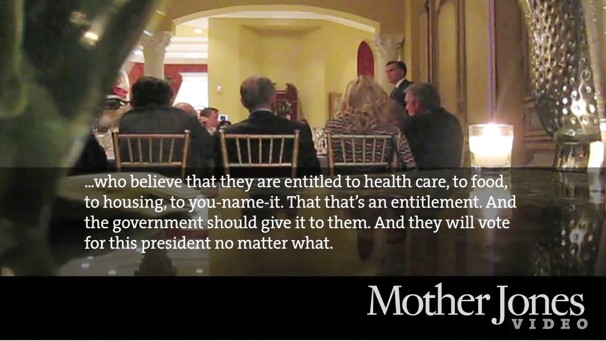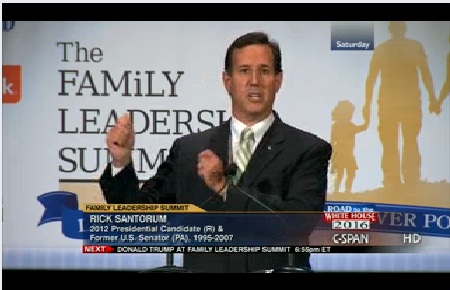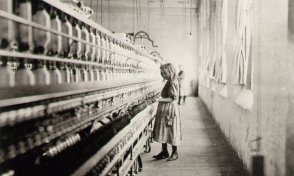Moms In the Picture
To my surprise, I discovered in early 2012 that encouraging women to “get in touch with their inner photo critics” and reject media manipulation of their body images made me a “misogynist” in the eyes of some people of the female persuasion. (See the original post and the attached comments.)
Those who reviled me for my opposition to such tendencies as cut-rate breast and buttock augmentation rejected my proposal that such expensive, unnecessary, and dangerous self-alterations result from uncritical acceptance of visual propaganda. They will doubtless find further proof of my woman-hating attitude in my celebration of a grass-roots movement known as “The Mom Stays in the Picture,” which arose spontaneously in response to an op-ed piece by Allison Tate at The Huffington Post.
Briefly put, Tate used a first-person account of her son’s invitation to join him in a photo booth at a party as a basis for discussing the tendency of mothers to stay out of family photographs due to dissatisfaction with their own physical appearance, and her own vow to change that for herself and her children. “I am not perfect to look at and I am not perfect to love, but I am perfectly their mother,” Tate wrote.
Tate’s confession and stance prompted an outpouring of support: more than a thousand women commented favorably, recounting their own relevant experiences, and to date more than 2450 have added photos of themselves with their kids to an online slideshow. This represents a consciousness-raising moment in relation to photographic imagery that I approve wholeheartedly.
These are women who, in asking questions about why a genre of photos appear a certain way, and who gets left out of them, and why, have indeed begun to get in touch with their inner photo critics. The photo critic in me welcomes them to the fold; and the man in me applauds them.
And a special tip of the hat to Allison Tate, whose essay melds media analysis, insight into vernacular imagery, and an autobiographical response to photography. Recommended as a model of populist media criticism.
The Guilt of Fundamentalist Christians

First published photo of Nakoula Basseley Nakoula, seen on the set of “Innocence of Muslims” with Anna Gurji, one of the actresses in the film. Screenshot from TMZ.com.
Remember Nakoula Basseley Nakoula, a/k/a/ Mark Basseley Youssef, the Coptic Christian agent provocateur who authored and produced the dreadful, tedious right-wing film trailer Innocence of Muslims, posted it on YouTube, set off Muslim riots around the globe, and, in the true and time-tested Christian spirit, tried to blame his actions on the Jews?
Bill Mears of CNN reports that, as of August 6, Nakoula/Youssef “has been granted supervised release from a federal prison, according to the U.S. Justice Department.” He’s been moved to “an undisclosed halfway house in Southern California,” which he’s permitted to leave for a few hours each day. If he doesn’t get caught violating the regulations of this limited release, he’s due to be formally freed next month, though he’ll still be on parole for awhile.
Given Nakoula/Youssef’s penchant for mischief, and his unholy alliance with a veritable who’s who of radical Christian fundamentalists and Islamophobes, along with his disregard for the strictures of his previous parole, I have no doubt that this duplicitous anti-Semite will make as much trouble as possible every time he sets foot outside that halfway house ― though, with a fatwa in force against him, I’d advise him to practice circumspection.
Perhaps he can promote his camp epic through bad movie ‘zines and tour this ridiculous film to venues and festivals that specialize in the celebration of cinematic failure. Though the film remains just as available now as it was on September 11, 2012, when protests over it erupted in the Arab world and spread rapidly, Islamists have long since moved on to newer, sexier excuses for rampage and slaughter.
Nakoula/Youssef’s biopic and its consequences featured prominently in my coverage of Election 2012. Though I wrapped that series up in January, I expect to comment from time on matters related to its denouement.
The Class That Dare Not Speak Its Name
 As long as I’m revisiting the campaign briefly, remember Mitt Romney claiming that he “misspoke” in his comments about the “47 percent,” and Paul Ryan’s suggestion that Romney at that moment was “inarticulate”? I scoffed in this space at those lame excuses, stating that Romney’s comments seemed clear, carefully articulated, assured, and practiced.
As long as I’m revisiting the campaign briefly, remember Mitt Romney claiming that he “misspoke” in his comments about the “47 percent,” and Paul Ryan’s suggestion that Romney at that moment was “inarticulate”? I scoffed in this space at those lame excuses, stating that Romney’s comments seemed clear, carefully articulated, assured, and practiced.
Turns out I was right, and both Captain Underpants and Wonkboy were simply lying, as is their wont. A. J. Schnack’s new documentary, Caucus, on the 2012 Iowa caucus, shows Romney saying this in public as far back as December 2011. Which means he said it many, many times. Hope that magic underwear is flame-retardant, Cap’n.
•
And as long as I’m on the subject or Romney, Ryan, and the “47 percent,” I can’t remember the last time I heard or read about a politician, or a talking head on a news and opinion show, or an op-ed writer at a newspaper or magazine, use the term “working class.” It has become The Class That Dare Not Speak Its Name ― or, perhaps more precisely, The Class That No One Dares to Name.
Headlines recently credited Rick Santorum with breaking this new taboo: “Santorum says Republican Party must appeal to working class,” according to wingnut conglomerate Fox News’s report on Santorum’s August 10, 2013 talk to the Family Leadership Summit in Iowa. Did Rick Santorum actually say that? Truth be told, no. He excoriated his party for its failure to speak to “job holders” and to celebrate “someone from the factory floor.” But he adroitly avoided saying “working class.” (I listened to it all the way through, out of journalistic duty; fascinating, for all kinds of reasons, among them his praise for the left because it “lives and breathes” its principles.)
In his July 24, 2013 speech at Knox College in Galesburg, IL, President Obama referred repeatedly to “working Americans” and “working families.” But he didn’t identify them as members of the working class. Instead, implicitly they’re either already members of the “middle class” or aspirants thereto, members of some unnameable class “fighting to get into the middle class.”
In this radically truncated version of the class system in America, the mission of unions ― founded, without exception, to ensure fair wages and decent treatment for the working class ― was and is “to fight for the middle class.” Obama defined the goals of America’s original unions ― “job security, with good wages and durable industries” ― as “what it takes to work your way into the middle class in America,” rather than what it takes to have a successful, satisfying, reasonably secure life as a member of the working class. Indeed, in his vision of America after World War II just about everyone except the extremely rich belongs to the middle class ― “whether you owned a company, or swept its floors, or worked anywhere in between.”
We still speak of poverty and the poor, but what once occupied a respectable stage above that in this country’s economic system, the working class, has disappeared from our vocabulary and discourse. Obama uses “middle class” roughly two dozen times in his talk, and dedicates the remainder of his term to “strengthening” that middle class. Not to fighting poverty. Not to bringing the unemployed into the working class, or strengthening the working class.
If anyone had doubts that Obama was little more than an Oreo, a middle-of-the-road white liberal, Bill Clinton with extra melanin, this talk should resolve them. I don’t know exactly when or how the term “working class” became pejorative and unmentionable, but I suspect it coincides with the rhetorical substitution of “the dream of home ownership” (for which read: suburbia) for “affordable housing” (for which read: rental apartments in cities), and the glamorization of car ownership (suburbia, again) over the practicality of inexpensive, comprehensive public transportation in urban centers.
Snap Quiz
Entirely off-topic: Could you pass an eighth-grade exam from 1912? Here’s one from the school system of Bullitt County, KY, dated November 1912. I squeaked through with a 65 ― weak, then as now, on my geography, despite more than half a century’s globe-trotting since junior high. Tempting to blame this on the fact that the border outlines of various nations on the map have changed since 1912, but that wasn’t ever my strong suit. Give it a whirl, and imagine how many kids in Bullitt County got left back, or didn’t make it into high school, based on this test a century ago.
•
This post supported by a donation from the Estate of Lyle Bongé.











Dear Allan–
I have been bitching about the death of the term “working class” for a long time. Your reasons for this slide into obscurity of not only the term but the people who are/were working class? Excellent.
Yr Mst Hmbl & Obdt Svt,
Donna-Lee